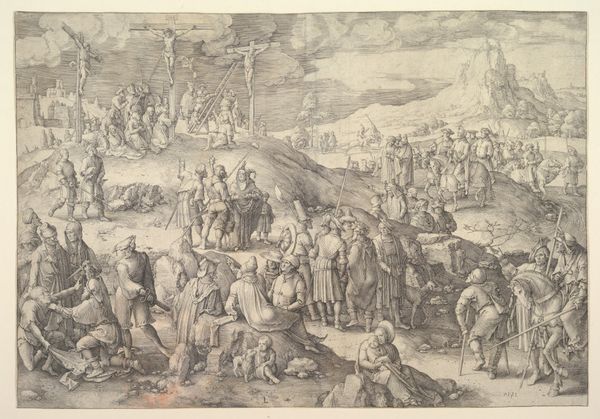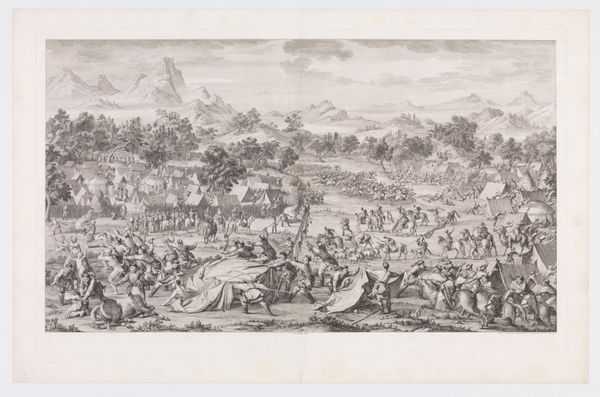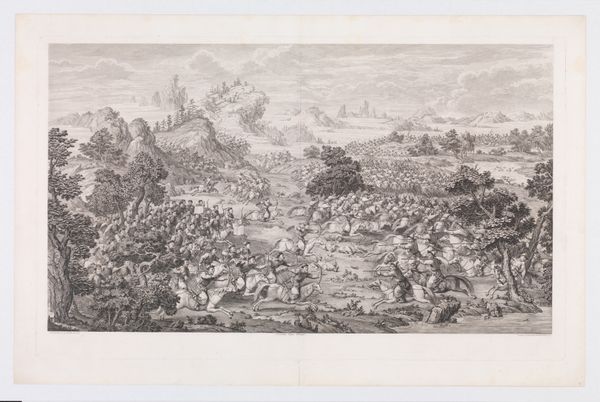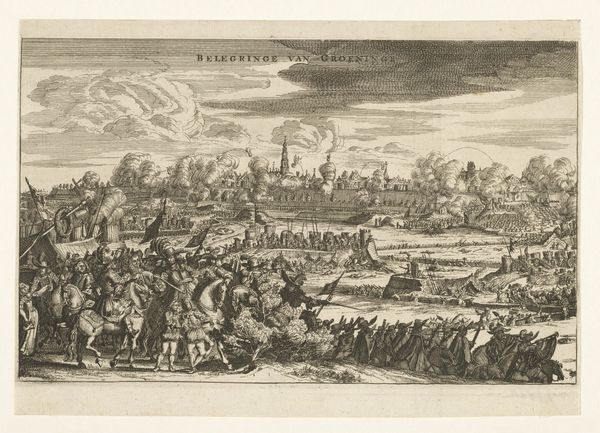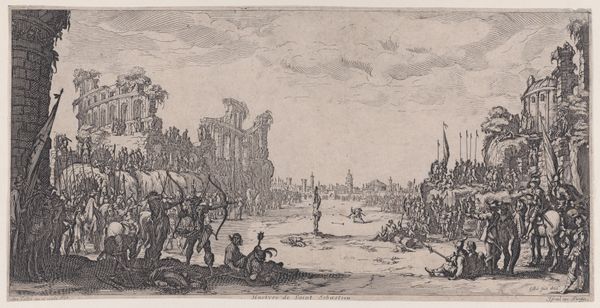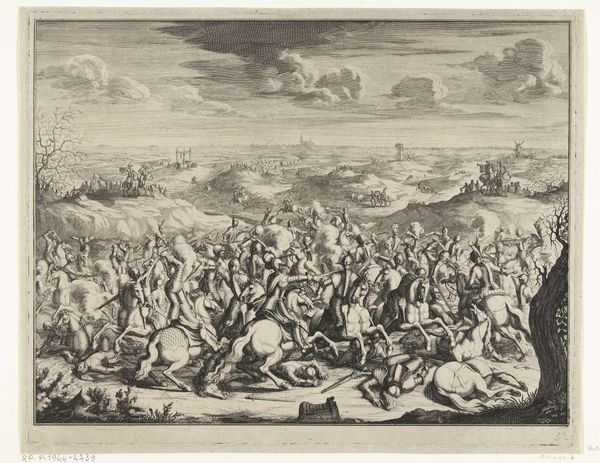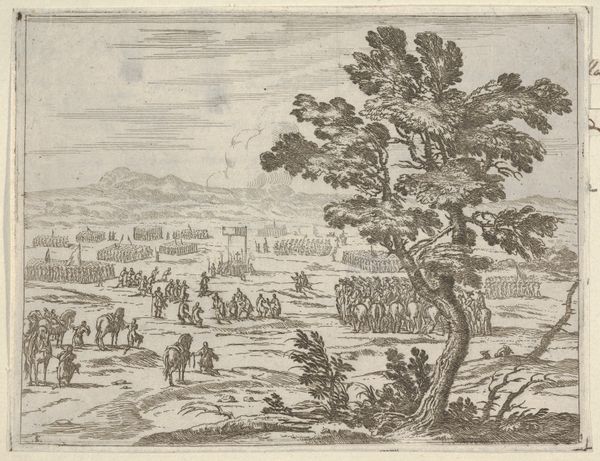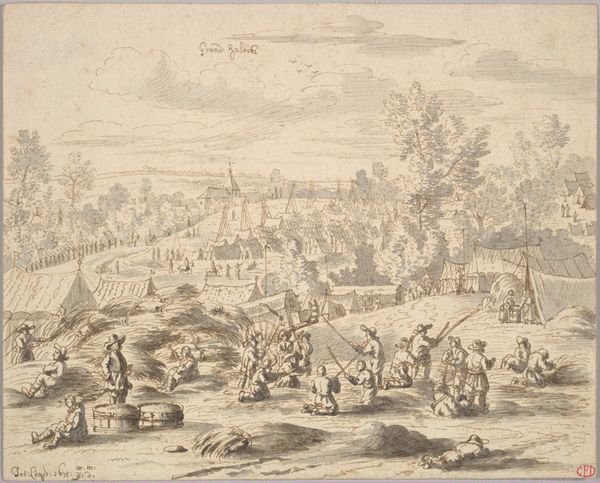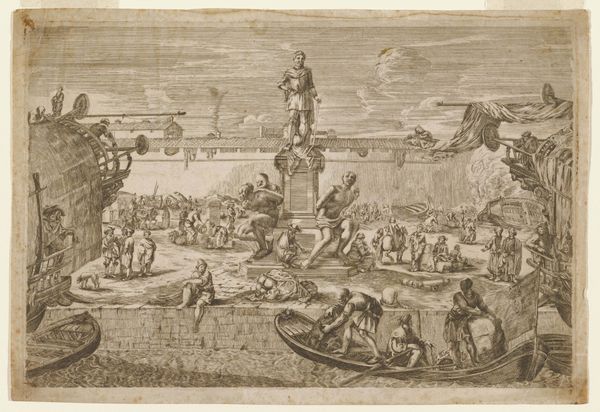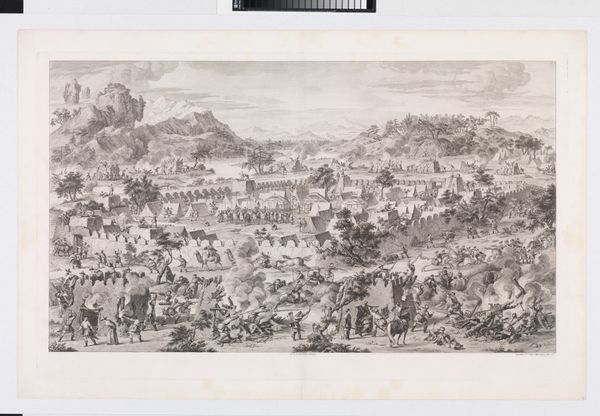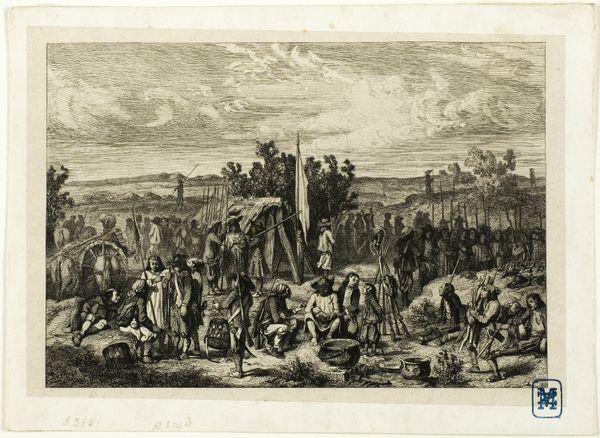
drawing, print, ink, pen
#
drawing
#
narrative-art
#
baroque
# print
#
pencil sketch
#
landscape
#
figuration
#
ink
#
pencil drawing
#
pen-ink sketch
#
pen
#
history-painting
Dimensions: sheet: 10 11/16 x 14 7/16 in. (27.2 x 36.6 cm)
Copyright: Public Domain
Curator: This drawing is Jan Luyken's "Melchizedek Blessing Abraham," created sometime between 1660 and 1712. What strikes you most upon viewing it? Editor: It's remarkably detailed for a pen and ink sketch, almost overwhelming in its depiction of labor and gathering. I am struck by how much the scene seems to burst forth and spill out onto the landscape, full of movement, toil, and transaction. Curator: Yes, there’s a distinct compositional organization at play. Notice the perspectival recession, guiding the eye from the detailed foreground figures to the hazy, almost ethereal cityscape in the distance. The high horizon line and use of hatching lend an almost diagrammatic quality, emphasizing symbolic intent above mere mimetic representation. Editor: I find the medium quite relevant; pen and ink lend themselves to the reproduction of prints, multiplying the possibility of the dissemination of biblical stories such as these and offering didactic possibilities for the masses through their production and affordability. I would imagine the creation of each print requires artisans working repetitively on the lines. Curator: A pertinent observation. Luyken uses line not just to depict form but to articulate spiritual space. The blessing is not merely an event but a confluence, the intersection of divine promise and earthly action. Semiotically, consider the positioning of Melchizedek: raised slightly, centrally located, an almost vertical vector pointing to the heavens. Editor: Absolutely, though my thoughts circle back to materiality and production; how readily available were the materials, how time-consuming was its creation and dissemination? It seems important to consider the place of such drawings in relation to the social structures and markets of the era, and how art production allowed the expansion of a particular theology to unfold. Curator: Indeed. We can also observe how the baroque style and the influence of landscape painting function formally to communicate a specific meaning that may otherwise have remained obscure. Luyken's command over the details provides a structure to decode a religious message. Editor: Thank you, both for clarifying aspects of formal composition and, from my side, speaking of how the artwork participates in material networks of cultural and economic exchange. Curator: Thank you. These diverse analyses bring new considerations to Luyken's print of a classical narrative.
Comments
No comments
Be the first to comment and join the conversation on the ultimate creative platform.

